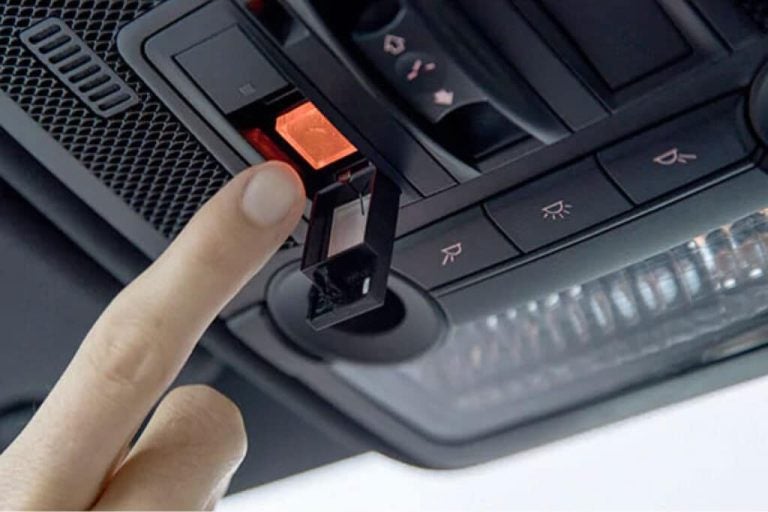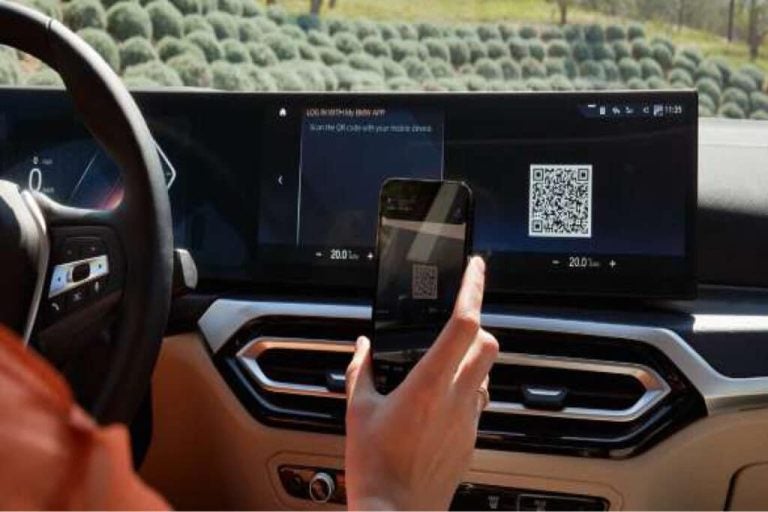eSIM for cars: How does it work and how to activate it
eSIM for connected cars is at its best. In this post, we tell you what it is about, and also the advantages, disadvantages, opportunities, and much more!
Physical SIM cards are slowly being phased out, and eSIMs are becoming a common solution for daily life. The eSIM for cars is a must-mention in 2025.
Companies like BMW are using eSIM technology to improve and enhance communications on their latest car models, allowing you to stay connected while on the road with different mobile providers.
Here, we’ll discuss the main features of eSIM-connected cars and how these work while also pointing out the advantages, disadvantages, and compatibility of this emerging technology.
What is an eSIM for connected cars?
An eSIM for connected cars is an embedded SIM built into your car. Car models, like the BMW iX and BMW i4, already have a dual eSIM card to manage them simultaneously. This allows you to connect your car to the internet for things like live traffic updates or emergency services.
Why is eSIM technology needed for cars?
The demand for smart cars with access to the internet is becoming increasingly relevant among consumers. eSIM technology plays a fundamental role in making data connectivity while in your vehicle a reality. With an eSIM for your car, you’ll be able to use maps, connect to emergency services, and much more, all while on the road and through multiple devices.
Impact of eSIM technology on car connectivity
Manufacturing eSIM cars means users will have a better connectivity experience, which is quite helpful when needing the internet to use an app or simply communicate to get assistance in case something happens.
Since producing a SIM card for a car is becoming less necessary, the production chain takes less time, which helps the telecom industry provide better and more efficient solutions for top-notch cars.
Finally, users will get the best of both worlds with a top-tier car and communication tech. While using an eSIM, you’ll easily change between mobile network operators and improve aspects such as security, vehicle tracking, and more.
Advantages of eSIM-connected cars
Here are some of the advantages that eSIM-connected cars ensure:
- Internet is always available on the vehicle
- Secure WiFi hotspot (provides TLS-encrypted connections)
- 5G network compatibility
- Simplified logistics processes for manufacturers and users
- Greater security thanks to car connectivity with eSIM-enabled vehicles
- Access to different features and digital services
- Information storage in the cloud
Disadvantages of eSIM-connected cars
The main disadvantage of using these cars is mainly with which networks they use, since these mostly use 5G, and different regions are still switching from 4G/LTE to 5G in 2025.
However, since connectivity is improving, car manufacturers will surely take a step forward in the upcoming years to create more eSIM-enabled cars.
How does eSIM technology work for cars?
eSIMs will work the same as physical SIM cards. So, here are some of the features you’ll get with an eSIM on your car:
- You can use your eSIM to synchronize your smartphone with your car.
- You can activate an eSIM exclusive to your car to access phone calls and mobile data.
How is an eSIM activated in cars?
Each manufacturer defines the connectivity platforms for the user. For example, BMW has the My BMW App, an exclusive brand platform for its customers. It allows users to choose an eSIM-compatible phone and mobile provider for their vehicle.
Once the users have chosen the voice and data plan with a cell phone company, they can also use the app to activate the eSIM. The user will receive instructions with simple steps to carry out this process.
After the successful activation, the driver and passengers can enjoy the features of assisted driving and infotainment services offered by their mobile carrier.
What’s the role of the eSIM in car safety?
Based on a memo from the European Union, starting in 2013, all cars must have a SIM or eSIM card to guarantee the emergency call system or eCall.
So, beyond providing a data plan on a car for entertainment, the idea is that an eSIM can assist passengers who are involved in an emergency situation.
How does the eSIM work in case of an emergency?
While not yet introduced as a law in the US, the automatic emergency call system “eCall” has been mandatory for all new cars in the European Union since March 2018.
The car must have a sensor system and a SIM or eSIM card for operation. When a serious traffic accident occurs, the car’s airbags are activated, and a free call is made to the European Union’s emergency line.
This call can be made manually by pressing an SOS button so you can connect with emergency services if required. The car’s telematics system will send the authorities information on the exact location, type of vehicle, and data so they can act promptly.
These types of regulations are already being announced in other countries such as Russia, Brazil, China, Turkey, India, and the United Arab Emirates.

Which automobile manufacturers are creating cars with eSIM technology?
Here is a list of some car brands that have inbuilt eSIM technology: BMW, Audi, Volkswagen, SEAT, FIAT, Mercedes-Benz, Porsche, Tesla, Toyota, Jaguar, Jeep, Land Rover, Maserati, Chevrolet, among others.
However, with the Internet of Things boom and connected cars, eSIM has become a business opportunity for car manufacturers and telecommunications companies with IoT solutions.

Mobile providers that support eSIM technology
While eSIMs do work with many new tech products (cars, smartphones, tablets), the exact devices vary in each country depending on the available mobile providers. That’s why verifying this information before making any final purchase decision is essential.
In this link, you’ll find the list of eSIM carriers that support eSIM for mobile devices. You’ll have a guide to the mobile carriers in your country that can provide exclusive talk-time and data plans for your car. Remember that this also depends on the model and year of the car.
Future opportunities for eSIM cars
Undoubtedly, adding eSIM technology to cars will soon contribute to creating increasingly customized digital services, increased security, and safe driving. In summary, they will:
- Bring enhanced connectivity experiences
- Increase security and data protection
- Comply with the regulations of each country
- Offer highly customized experiences
- Allow software updates in real-time
In general, eSIMs for cars will provide advantages that will help strengthen trust between brands and their customers.





 Language
Language 


















 No results found
No results found










